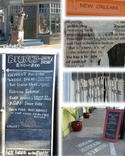"Memento Mori" – "Remember your mortality" – was whispered into the ears of Roman generals as they celebrated their great military triumphs. Someone should be whispering something similar in the ear of Gov. Jerry Brown, who has been quick to celebrate his tax and budget "triumph" and to denounce as "declinists" those who threaten to rain on the gubernatorial parade. read more »
Should California Governor Jerry Brown Take a Victory Lap?
- Login to post comments
New York Catholic Schools: Will Decline Spark Innovation?
In a heart-breaking scene in the 2010 documentary Waiting for Superman, a young mother is crying in her Harlem apartment, which overlooks her daughter’s school. Bianca, her daughter, has been barred from attending graduation. The villain isn’t a union boss or a bureaucrat in Albany – instead, it's the Archdiocese of New York and its affable leader, Cardinal Dolan. Bianca hadn't misbehaved or been excessively tardy. read more »
- Login to post comments
New York City's Revival: The Post-Sandy Apple
Although its manufacturing jobs are gone forever, New York continues to ride the crests of its paper-profits prosperity. Housing in once-notorious slums now costs more than $1.5 million. The waterfront is getting a green-space makeover. The city’s future depends on Wall Street’s ability to attract capital, be it from clients or bailouts. And the jury is still out how the rise and rise of New York reflects on the legacies of former mayors Rudy Giuliani, Ed Koch, and (soon to be former) Michael Bloomberg. read more »
The Real Winners Of The Global Economy: The Material Boys
Something strange happened on the road to our much-celebrated post-industrial utopia. The real winners of the global economy have turned out to be not the creative types or the data junkies, but the material boys: countries, states and companies that have perfected the art of physical production in agriculture, energy and, remarkably, manufacturing. read more »
Communities Need to Build Better Millennial Connections
A remarkable, but mostly unnoticed, 2012 study found a powerful correlation between a community’s civic health and its economic well being. The analysis by the National Conference on Citizenship (NCoC) and its partners found that the density of non-profits whose purpose was to encourage their members’ participation within the community correlated strongly with the ability of a locality to withstand the effects of the Great Recession. read more »
The Age of Bernanke
To many presidential idolaters, this era will be known as the Age of Obama. But, in reality, we live in what may best be called the Age of Bernanke. Essentially, Obamaism increasingly serves as a front for the big-money interests who benefit from the Federal Reserve's largesse and interest rate policies; progressive rhetoric serves as the beard for royalist results. read more »
Disney Stops Thinking About Tomorrow
Walt Disney's first version of Tomorrowland came to life in 1955. The attractions were geared towards the space age, and towards the future of transportation that Disney believed scientists of his time were about to create. The imaginary world was intended to “give you an opportunity to participate in adventures that are a living blueprint of our future.” When Tomorrowland opened, its showpiece was the TWA Moonliner exhibit, which contained the Rocket to The Moon; later, its Flight to the Moon gave another perspective. read more »
The Beauty of Urban Planning from the Ground
In a piece called The Beauty of Urban Planning from Space, the Sustainable Cities Collective highlights views from space of uniquely designed street pattern designs in various cities around the world. There are ten examples that illustrate the zenith of urban planning.
As attractive as the street patterns are, they highlight the inevitable inability of designers, or anyone else for that matter, to influence much more than small changes in the overall urban form. read more »
Gentrification and its Discontents: Notes from New Orleans
Readers of this forum have probably heard rumors of gentrification in post-Katrina New Orleans. Residential shifts playing out in the Crescent City share many commonalities with those elsewhere, but also bear some distinctions and paradoxes. I offer these observations from the so-called Williamsburg of the South, a neighborhood called Bywater.
Gentrification arrived rather early to New Orleans, a generation before the term was coined. Writers and artists settled in the French Quarter in the 1920s and 1930s, drawn by the appeal of its expatriated Mediterranean atmosphere, not to mention its cheap rent, good food, and abundant alcohol despite Prohibition. read more »
Gentrification and its Discontents: Cleveland Needs to Go Beyond Being Creatively Classed
“Indeed, we have the know-how, but we do not have the know-why, nor the know-what-for”—Erich Fromm, social psychologist.
The question of how you “become” as a city has been weighing on me lately. Is it enough to get people back into the emptiness? Is it enough to pretty the derelict? I mean, is the trajectory of Cleveland’s success simply a collection of micro-everythings, start-ups, and occupancy rates? That is, is Cleveland’s reward simply the benefit of being creatively classed? read more »





















